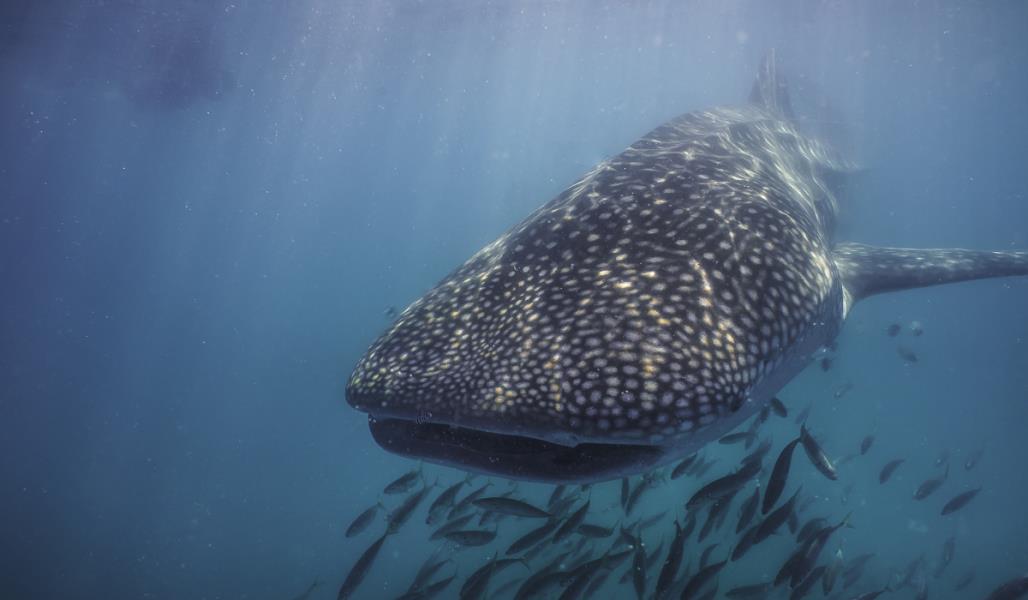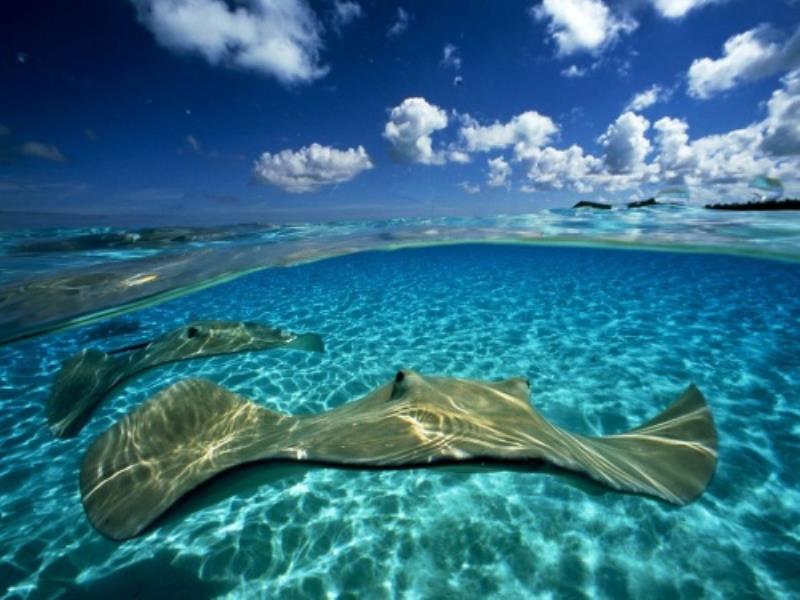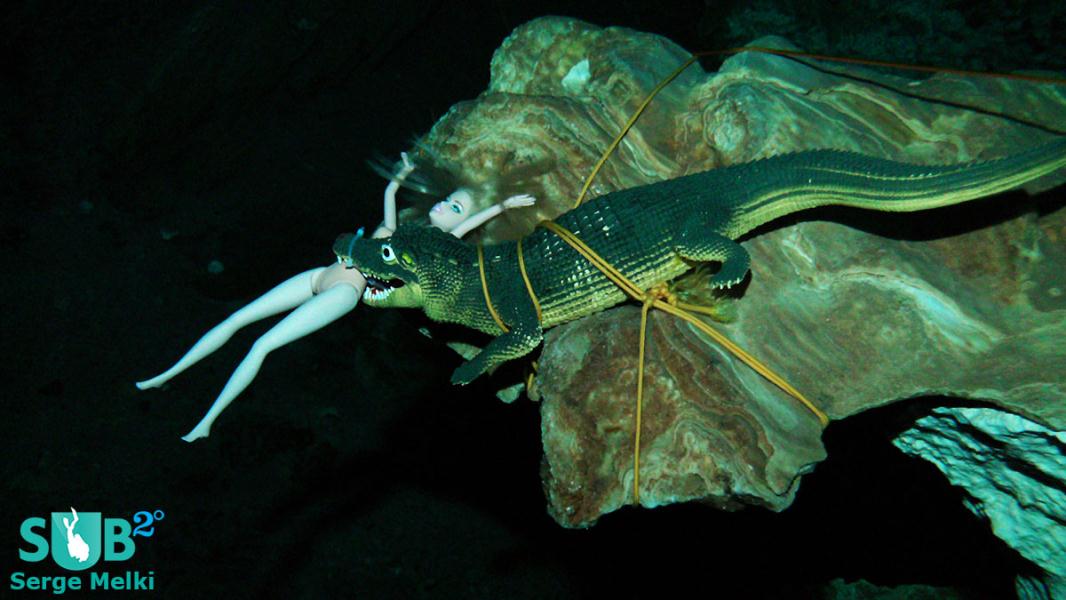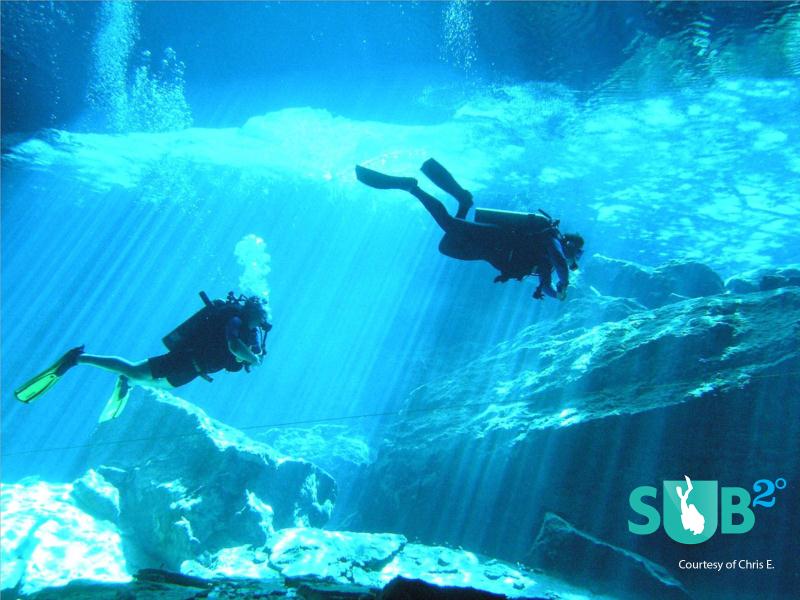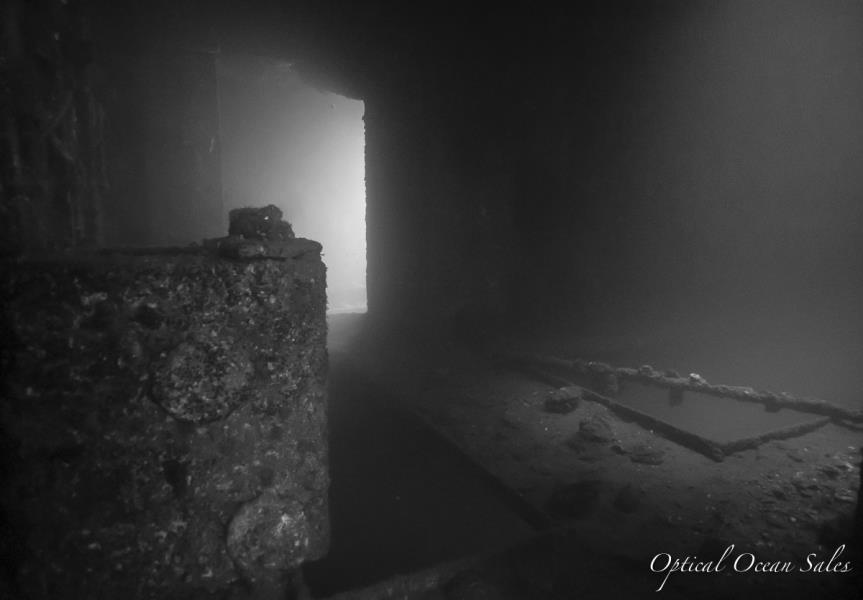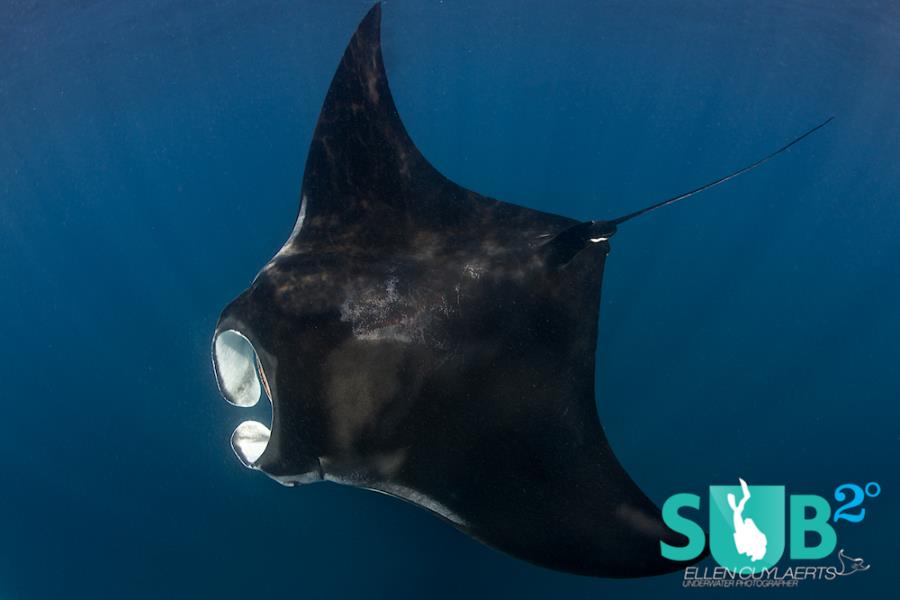 Scuba Diving Mexico
Scuba Diving Mexico
342 Dive Sites 322 Dive Shops 113 Dive Logs
Part 1: Overview of Scuba Diving in Mexico
Mexico is a huge country that has extensive coastline on the Atlantic Ocean and Pacific Ocean sides of the country.
Scuba diving and tourist areas in Mexico go hand in hand; most if not all of the resort towns that line Mexico's coast have one or more scuba diving shop.
If you find yourself in a remote area of Mexico, ask around. Certified scuba divers will most likely be able to find a private, competent boat captain and scuba instructor that is either a local Mexican or an expatriate from the United States or Europe.
Yucatan Peninsula & Riviera Maya
In general, they say scuba diving in Mexico is “the best along the Riviera Maya and Costa Maya coastal areas”, where the Yucatan Peninsula meets the quiet, warm waters of the Caribbean Sea. The blue, warm, clear waters of the Caribbean are truly hard to beat and offer paradise conditions for beginners and advanced scuba divers alike.
Banco Chinchorro
The pinnacle of scuba diving in Mexico is probably the remote, hard to get to and protected Banco Chinchorro. This coral atoll is off the coast of Costa Maya not far from the border between Belize and Mexico.
The scuba diving on the atoll is pristine and offers high visibility and diverse healthy marine life and reef.
Banco Chinchorro is one of four coral ref atolls in the western hemisphere; the other three atolls are just to the south of Banco Chinchorro in the waters of Belize. The atoll is heavily protected and guarded by the Mexican government. Although there are wrecks around, scuba diving on the wrecks is limited by the government due to theft and shallow, dangerous currents. On lucky occasions, some of the mainland dive shops along Costa Maya or even some dive shops, which launch from the Cancun and Playa del Carmen area, provide the rare opportunity to dive this pristine wonder. If you get a chance, and have the stomach for high seas do not forget about Banco Chinchorro.
Cancun & Playa del Carmen
Most of the scuba diving in Mexico's Caribbean coast happens off shore from Cancun and Play del Carmen, and their nearby islands of Isla Mujeres and Cozumel. When you combine the beauty and laid back environment of the Riviera Maya with its warm winds and waters plus the amazing Mayan ruins scattered in the jungle nearby, you will not be disappointed.
Gulf of Mexico
Up along the Gulf coast of Mexico, most of the diving and dive shops are offshore from the state of Veracruz, and either north or south of the Port of Veracruz. The small fishing town of Anton Lizardo to the south of the port is a great place to embark on a scuba diving trip to explore Veracruz reef systems that lie offshore as reef platforms.
Pacific Ocean Coast
Looking to the Pacific Ocean to the west and the Sea of Cortez, you will find many famous and established tourist towns like Puerto Vallarta, Mazatlan, and Acapulco. While the Pacific Ocean is a gorgeous, deep, dark blue, the waters are stronger and colder than the Caribbean and do not offer the inviting waters of the Caribbean. You can easily arrange scuba diving trips via boats that bring you out a bit offshore to get away from the current. There, the islands known as Islas Marias, off Puerto Vallarta, offer a unique scuba diving experience.
Baja Peninsula
Traveling to the remote and desert environment of the Baja Peninsula brings most visitors to the tip of the baja known as Cabo. In the town of Cabo, San Lucas there are scuba and snorkeling shops to arrange boat trips to explore Cabo's underwater world, and there is the capital of the baja, La Paz on the Sea of Cortex side. When you depart out of La Paz, scuba diving trips can quickly get you to the many scattered, small reef formations in the area. Basically, scuba diving in Mexico on the Pacific Coast is more for experienced scuba divers and usually requires a wet suit, or even a dry suit because of the lower water temperatures. Caribbean scuba diving, however, rarely requires any more than a swimsuit.
Part 2: Dive Sites, Marine Life & Environment in Mexico
Yucatan Riviera Maya & Cancun
The marine life in Mexico's Caribbean Sea along the Yucatan's Riviera Maya and Cancun area is famous for being colorful. There are famous dive sites such as the now famous Cancun Underwater Museum where you can swim with nurse shark, dolphins, sea turtles and many reef fish, among the artificial reef art scattered to make an underwater landscape. The statues provide a medium for coral growth and hiding homes for moray eels and reef fish such as damselfish.
Two other famous technical dive sites that lie between the resorts of Cancun and near the island of Isla Mujeres are known as El Tunel and Cuevas de Afuera. These deep dive sites offer a challenge to advanced scuba divers and the visibility at least dive sites are reliably clear. It is common to see hammerhead sharks cruising these dive sites.
Gulf of Mexico
Along Mexico's Gulf coast lies the port of Veracruz and off that shore lies several amazing and healthy coral reef platforms perfect for scuba diving. While the port is busy and polluted, the reef has survived, and the greenish blue warm waters of the gulf give a surprising, amazing diving experience with high visibility. Check out the two wreck dive sites on either end of the beautiful Anegada reef. The Maria Elena wreck is found on the northern end of the reef, and the wreck known as El Rielero is on the southern end of Anegada.
On the southern rim of Puerto Vallarta's Banderas Bay are the dive sites near the shore known as Los Arcos, Majahuitas and El Chimo. There are many dive sites in the bay as well as to the north and south of the Puerto Vallarta area. Many of the resorts in the area offer instruction from their pools and form cooperative tours with local dive shops and scuba diving instructors so they can offer their guests first class scuba diving opportunities during their stay.
There are scuba dive sites established and yet unexplored along most of Mexico's huge Pacific, Caribbean and Gulf of Mexico coasts.
No wonder Jacques Cousteau fell in love with Mexico and spent so much time exploring Mexico's underwater treasures.
Part 3: Dive Shops, Airports & Logistics of Diving in Mexico
Getting Around
Many of the touristy coastal towns of Mexico have their own international high traffic airports. Many direct flights from cities in the United States and from Mexico City deliver you quickly to where you can get your fins wet. Mexico's International Airport known as Internacional Benito Juarez (MEX) is a great launching point after exploring the busy but historically amazing Mexico City. From there, catch a direct flight to Mexico's larger tourist locations from Mexico City such as Cancún International Airport (CAN), Veracruz's Las Bajadas Airport (VER), Acapulco's General Juan N. Alvarez International Airport (ACA), Puerto Vallarta's Licenciado Gustavo Díaz Ordaz International Airport (PVR) or service to Cabo's via Los Cabos International Airport (SJD).
There are also smaller airports you can hop flight from Mexico City to Mexico's more remote and smaller coastal villages. If you are traveling from the US to Mexico, take a direct flight or go through Mexico City from California's Los Angeles International (LAX) and other airports out of several major cities in the state of Texas that borders Mexico. It is easy to arrange a direct flight to Cancun in the Caribbean or Puerto Vallarta or Cabo on the Pacific coast from the western United States. These direct flights from the US can be very reasonably priced, and flight time is only about six hours to step out to paradise.
The Four Main Diving Areas
The most prominent regions for scuba diving in Mexico lie along its coasts. There are the clear green waters of the Gulf of Mexico around Veracruz, the pristine Caribbean waters off the eastern shores of the Yucatan Peninsula, the historic resort cities and beach towns along Mexico's Pacific coast and the Baja Peninsula and its party town of Cabo at its tip.
The platform reefs found out in the port of Veracruz can be accessed by boat through local dive shops such as the prominent Veracruz dive shop Scubaver. Check out the small fishing town of Anton Lizardo, not far south of the city of Veracruz.
In Anton Lizardo, find the Sobuca Dive Shop and arrange a trip out to the many reefs scattered offshore.
The great thing about the Gulf coast around Veracruz is that it is still a hidden treasure and has not yet been made into an ultra touristy, resort centric Mexican coastline like the Cancun, Cabo and Acapulco areas. Big resorts and flashy places are great but the authentic feel of Veracruz is unique and the Gulf breeze and waters are so warm and inviting.
There are many dive shops and private boats for hire in the Puerto Vallarta area. Inquire about the day trips that the dive shops known as Vallarta UnderSea or Vallarta Adventures are offering. If you shop around you will most likely find a perfect day trip to local dive sites in and around Puerto Vallarta's Banderas Bay.
If you are planning an adventure to the rocky shores of the Baja Peninsula there are some established dive sites off the tip of the peninsula around the town of Cabo San Lucas. You can easily arrange a snorkel or scuba diving trip from the many boat captains and dive shops that operate from the marina at Cabo. Investigate what the dive shop Cabo Eagle Divers has to offer for the week you are visiting and make sure to also check out Cabo's oldest dive shop Amigos Del Mar.
Last -but by no means least- are the dive shops that provide access to Mexico's most famous scuba diving coast, the Riviera Maya and the area off Cancun. Two prominent dive shops in Cancun's hotel zone are Nautilus Diving and Training Center and divePro Cancun Dive. Both shops will hook you up as a beginner or an advanced scuba diver.
Yucatan Peninsula & Banco Chinchorro
Down the coast and away from the resorts of the Riviera Maya, you enter into a much more quiet and traditional Caribbean Mexico along the Costa Maya towards Belize. In the small fishing village of Mahahual there is the resort and dive shop known as Dreamtime Dive Resort. This dive shop offers local dive trips to the barrier reef and also occasional trips that can be organized to go to the remote Banco Chinchorro, Mexico's only coral atoll.
No matter where you journey along Mexico's extensive coastline the beauty of Mexico is that the air is almost already warm and the waters are open to scuba diving adventures.
The industry of scuba diving is growing stronger and stronger each year in Mexico's resort regions and even within more remote beach villages, especially along its Pacific coast and Caribbean shores.
Useful Resources
---- Book Your Diving ----
Fill in the Form Below.
Our hand picked regional partners will deliver no obligation quotes.
Tweets by @DiveAdvisorApp
Top Dive Shops
Top Dive Sites
Reviews
Dive Logs
-
Dominic Evans Wednesday, August 1, 2018
-
Jenny Hastings Friday, February 3, 2017
Certifications Offered
-
Open Water Diver
Solo Buceo , Cancun -
PADI Scuba Diver
Solo Buceo , Cancun -
Enriched Air Diver
Solo Buceo , Cancun
